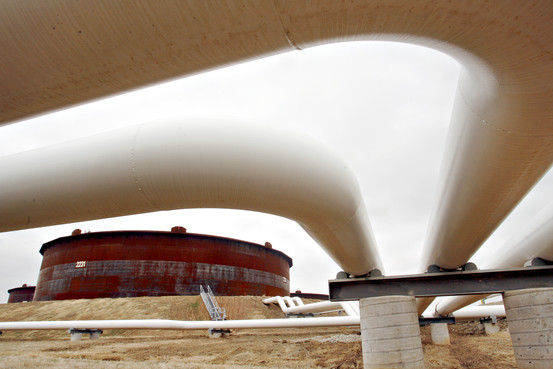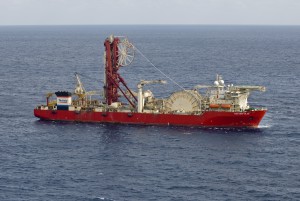March 2013, Vol. 240, No. 3
Features
Pipeline Integrity: Its Not Just Hardware

The integrity of pipelines is a matter of serious concern for those within the oil and gas industry, and for those watching from the outside as well. All the attention is, of course, fully justified.
Many pipeline networks around the world are beginning to show their age, and maintaining their integrity is a constant challenge. The stakes are, after all, very high. Keeping pipelines safe, reliable and efficient is essential to minimizing the risk of high incident events that can have a devastating impact on life, reputation, production and the environment.
Pipelines are, however, not just hardware. Behind the physical infrastructure there lies a complicated network of assets that is critical for managing and maintaining the pipeline process. Process control software is one element of pipeline integrity management which has, to a large extent, been overlooked (i.e. a “hidden asset”). Yet this process critical software allows the pipeline infrastructure to be operated efficiently, safely and reliably. Any malfunction in the process software network can have catastrophic effects for the pipeline as a whole.
Despite the risks of system failure, a staggering 90% of production companies do not have secure systems in place to adequately protect all of their process critical software. Yet operators are often totally dependent upon software to support their pipeline control systems. The critical process software at the heart of these systems is intrinsically linked to the smooth running of the pipeline, the quality of the product being transported, and the safety of the network and its operators. The consequences of poor process software management can be as severe as would be the case in a failure of the physical assets themselves. Therefore, within the industry, it is essential that operators recognise that process software is an integral part of the pipeline process and requires as much attention as other physical assets.
Four key factors which affect the integrity of these vital software assets are: compliance, security, change management, and disaster recovery. Operators must examine their preparedness systems in each of these key areas. The old adage applies: there’s no point in closing the barn door after the horse has bolted. Given the risks and financial consequences associated with poor management of process critical software, it behoves every operator to have effective systems in place.
Compliance: The Rules Are The Rules
The oil and gas industry is obliged to comply with a variety of international safety standards, guidelines and regulations governing pipeline process control software. These requirements demand, among other things, secure backup of process critical software code and documents, configuration management, including change control and fault logging, user password management, security of information, and audit trails. If operators neglect to install an effective system to address these responsibilities, they risk non-compliance with industry standards. In other words, the best way to stay on the right side of the rules is to have effective software management in place.
Security: Assets Need To Be Guarded
An essential element of any process software system is making sure the right person will always have access to the right information at the right time. By the same token, ensuring that the wrong person never has access is crucial to guaranteeing the effective management and security of process critical software. These basic truths were demonstrated recently by the cyber attack on Iran’s national oil company. Given the sophistication and determination of hackers, the risk of information security breaches is ever increasing. Aware of this threat, ICS-CERT, the investigative division of the U.S. Department of Homeland Security, has recently initiated a program to raise awareness of the problem with its “Gas Pipeline Cyber Intrusion Campaign.”
Contrary to popular perceptions, the hacker is not the most common cause of security breaches. The most frequent problem arises because of the increased number of users who have access to process critical software. Keeping track of these users and controlling their access is a significant challenge to all pipeline operators.
According to a recent study, 43% of security incidents in 2010 were perpetrated by an insider. On occasion, these are unintentional breaches. However, far more serious, a user, employee or contractor can deliberately infiltrate a system in order to steal data or disrupt process control systems. According to the 2011 Global Information Security Survey by CIO Magazine and PwC, the average loss resulting from each security breach was $875,146. Of those surveyed, 42% reported financial loss as the biggest impact of these breaches, while 30% listed intellectual property theft as the most serious impact. Among respondents, 30% said the reputation of their business had suffered because of the breach, while 17% were affected by fraud, and 14% reported loss of share value.
The message is clear: the more people who have access to critical systems, the greater the risk of security breaches. In order to guard against such threats, managers must put in place a secure system to control access to process control software.

Change Management: Staying Ahead Amid Constant Change
As anyone who has a computer knows, software constantly evolves, necessitating frequent updates. This plain truth has enormous implications for the pipeline industry. Effectively managing inevitable changes to process critical software is crucial to ensuring that operators maintain control over their systems and can react quickly should problems arise.
Recent evidence has highlighted “parallel software changes” as one of the main problems encountered. This arises when simultaneous alterations are made to the same software, often creating multiple versions of software applications. At the least, this can reduce efficiency by wasting time and money. At worst, the chaos of parallel software changes can cause injury, damage and lost production.
When a change to an existing or developing software asset is desired, it is vital that the proposed adaptation is thoroughly checked for safety, functionality and compliance before being approved and implemented. Strict procedures need to be followed so that changes are properly developed, approved and effectively put in place.
Disaster Recovery: Be Prepared
In order to appreciate the impact that process software can have on production, operators should consider the following: What would the effect on safety, production and the environment be, if process software failed or was corrupted and the correct replacement was not readily available? What would an unplanned shutdown of a pipeline system lasting one hour cost them? What if the shutdown stretched to a whole day, or a week?
Despite the potentially high costs associated with control system software failure, many operators give scarce thought to the security and integrity of this important asset until something goes wrong. CDs carelessly stuffed in unlocked drawers or workshop filing cabinets suddenly become important, but who knows where they are?
The various media used to store process software coding is vulnerable to corruption and can also be misplaced. Original equipment manufacturers and systems integrators may hold copies of the proprietary (operating) software for control devices and systems; however, they do not routinely retain copies of all the system’s configuration coding. Often this is written and applied by the operator’s engineers and contractors during the life of a control system.
In addition, carelessness with regard to the periodic backing up of crucial software can exacerbate the problems when something suddenly goes wrong. The software required might be stored miles away from where the problem has arisen, thus causing unnecessary delay and additional costs of transportation. In other words, the costs associated with an ineffective back-up system highlight the importance of being able to access the right software at the right time.
Taking Control
Given all these risks, it is clear that hidden asset integrity is just as important as the integrity of physical assets – pipes, pumps and valves.
Recognizing these risks, Asset Guardian Solutions Ltd. created an intuitive software-based toolset that helps to manage the process critical software essential to automated process control systems. This toolset addresses all of the above key areas affecting the integrity of oil and gas assets. It delivers compliance with industry guidelines and directives, provides back up in the event of a shutdown, enables the secure management of software and helps to manage change. This means that software problems can be avoided, or, when they occur, that the damage they cause is kept to a minimum.
Many companies, including BP and Technip, have already reaped the benefits of the unique services offered by Asset Guardian Solutions Ltd. For instance, BP Pipelines has used these services to ensure that the integrity of their process critical software is securely accessible anywhere via the BP network. BP recognizes the security of its onshore and offshore systems means not just maintaining the hardware, but also pre-empting potential software problems before they occur.
Many oil and gas companies are, however, yet to grasp the importance of assuring the integrity of hidden assets. While they might be impressively vigilant when it comes to the security of physical asset, they fail to pay due attention to the importance of process software. Until they do, the risks associated with non-compliance, security, change management and disaster recovery will continue to be an underlying threat to the business.






Comments